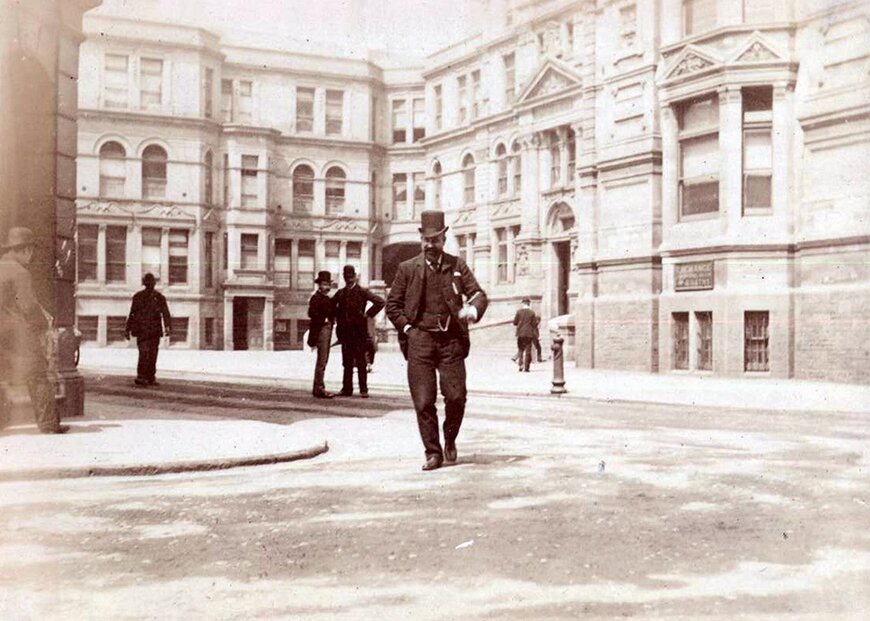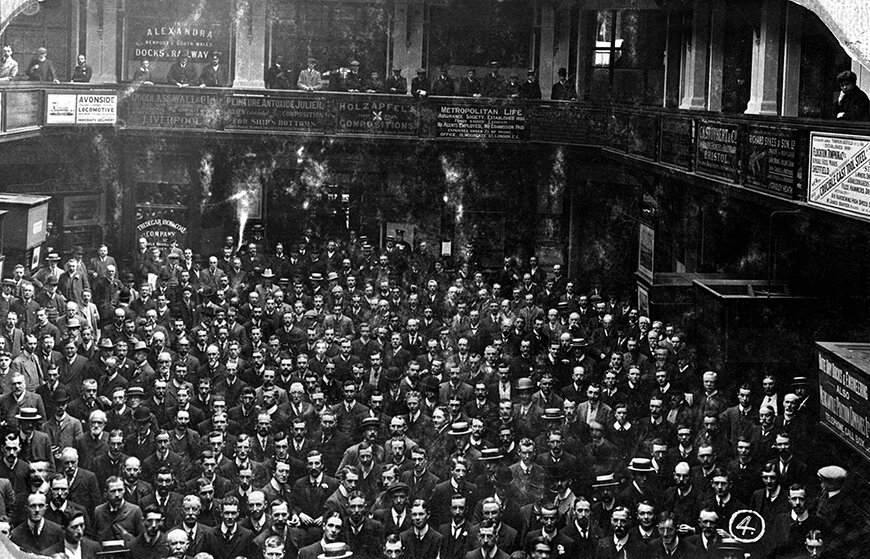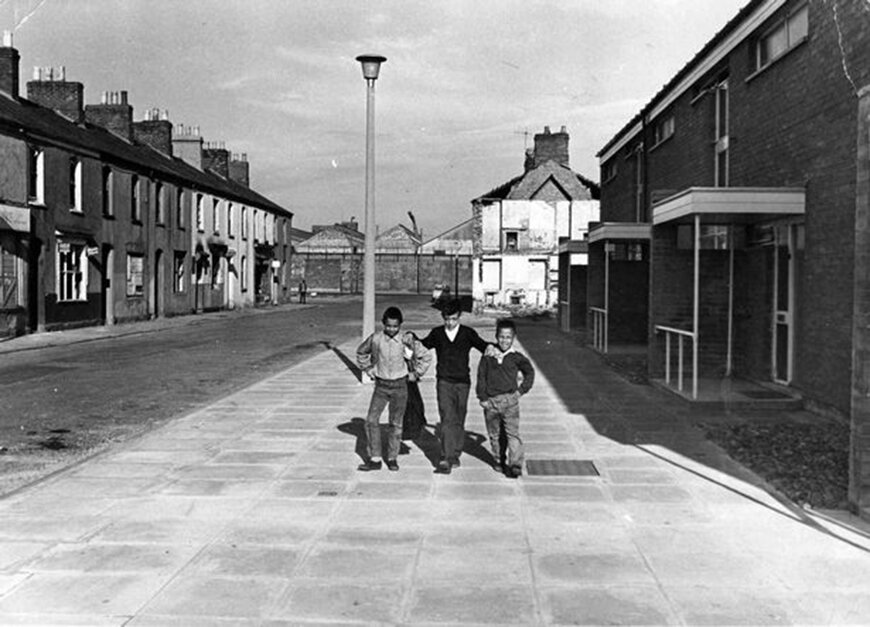Today, Cardiff Bay attracts both locals and tourists from across the globe to the Welsh capital’s waterfront. Offering an array of attractions and entertainment, Cardiff Bay is a flourishing blend of contemporary culture and fascinating history.
Built upon turbulent foundations, the development of the cosmopolitan area was certainly far from smooth sailing. In fact, the regeneration of Cardiff Bay was recognised as one of the most ambitious regeneration projects in Europe.
The Industrial Revolution
The city of Cardiff was largely shaped by the momentum of the Industrial Revolution of the 1790s. Becoming an influential industrial port, this era gave Cardiff the recognition to make its mark on the world map. As a result of the Industrial Revolution, Glamorganshire Canal was built in 1794. This meant iron and coal could be transported to Cardiff from the Valleys.
Historian Neil Sinclair told the BBC:
“It had been transformed from an insignificant village in the middle of marshland to a city at the centre of everything. Coal, iron and steel industry from the south Wales valleys had ignited Britain’s’ industrial revolution.”
The valley-side canal was watched over by Richard Crawshay of the Cyfarthfa Ironworks. Crawshay was a wealthy ironmaster of Merthyr. With a rapidly increasing demand for iron and coal, numerous docks were constructed during the 1830s. These additional docks included the Bute West Dock, Bute East Dock and The Queen Alexandra Dock.
The Influence of the Coal Exchange
The Welsh capital’s iconic Coal Exchange played a major role in Cardiff’s industrial success. The Grade II* listed building set the price for coal worldwide. Within its walls, the bustling grand trading hall saw business men, merchants and coal barons flow in and out of its doors each day.



Years of highly prosperous business deals were fixed with countries around the world from inside the building. Perhaps most memorably, the world’s first £1 million cheque was signed at The Coal Exchange.
Tiger Bay and World War 2
Following World War 2, Cardiff Bay felt the effects of the war first-hand, losing international markets. The demand for coal only continued to slump as steel industries in other countries began to develop.
Sadly, by the 1960s, coal exports from Cardiff were scarce. And as a result, in 1978 the area saw the loss of 3,200 jobs. The East Moors Steelworks had officially closed its doors.
The 1950s and 1960s
The popularised stereotype of Tiger Bay is far from a true representation of its communities. Renowned for its ‘notorious’ nature, the docklands area was home to far more than gambling dens and violence. But unsolved crime and a bustling Red-light district earned the area a controversial reputation and unshakeable stigma.
Sinclair, who grew up in Tiger Bay said:
“Yes, if you wanted trouble you could find trouble but that stigma obscures the fact that the majority of the men who lived there were hard working members of the community, not pimps running whores. Far from it. Everyone looked out for one another and nobody ever locked their door. If this was such a dreadful place then surely we’d have all been murdered in our beds? It was stigmatised. Good old fashioned racism. This was commonly stated on the streets of Tiger Bay.”
Sinclair added:
“This was a major industrial port and thousands of workers descended upon it daily. Come 4 o’clock when the whistle blew they came out in what seemed like their millions.
They got on their bikes but they didn’t go home and slap the money on the table for their mams, they headed for the pubs and the place was jumping.”
While pubs known for brawling sailors were given names such as ‘Bucket of Blood’ and ‘Snakepit’, others boasted a more Bohemian atmosphere. Pubs in the area attracted those from out of town to enjoy dynamic jazz and delicious French cuisine.
Tiger Bay’s most famous former resident, Shirley Bassey signed her first contract in 1953. And the ‘Girl from Tiger Bay’ went on to become Dame Shirley Bassey. The Tiger Bay star is best known for recording the hypnotic theme songs to James Bond films including Goldfinger and Diamonds are Forever.
Tiger Bay is also remembered fondly for its progressive racial harmony. And today, the Welsh capital is home to one of the most long-standing multi-racial communities in Britain.
During Cardiff’s heyday as ‘King Coal’, the docklands area of Tiger Bay had welcomed an influx of immigrants. In fact, there were at least 57 nationalities recorded in Butetown throughout the 1950s.
As Neil Sinclair recalls:
“Tiger Bay was in the simplest words possible a symbol of racial, ethnic, religious and ecumenical harmony…
my mother used to say ‘the League of Nations could learn a thing or two from Tiger Bay’.”
Thriving in culture and diversity, the largest communities in the area included Norwegian, Somali, Yemini, Carribean, Italian and Greek. Tiger Bay saw diverse races and backgrounds join in unison to socialise; many immigrants went on to marry women from the South West Valleys.
With its unique blend of dynamic cultures, it’s no surprise that academics have been fascinated by Tiger Bay and its multi-ethnic history ever since.
Amidst the celebration of racial harmony, the 1960s also saw large-scale destruction of areas of Tiger Bay. Communities were told that the streets of Butetown were no longer fit for habitation, leaving many people displaced.
The above video shows interviews with residents who express mixed reviews about the plans for redevelopment.
One Tiger Bay resident said:
“It is unhealthy in some parts here but a part of that is from the people themselves. Some people don’t keep the place clean while others do their best to keep it clean.”
When asked if she wanted to stay in Tiger Bay, one lady answered:
“It was a big change for us but we loved it after that. We realised what lovely people were down here. At one time it was a bit rough but I don’t think that exists anymore.
Anyone can come here. I remember when I was very young Tiger Bay was dreadful. Once upon a time they had all these cafes with prostitutes and what not…it was tough and policemen went down and were stabbed. But that’s all gone now. People down here are charming.”
The 1970s and 1980s
Cardiff Bay in the 1980s has been described as little more than a ‘wasteland’. If you’d have taken a walk around the area, you would have found little else than derelict docks. Unemployment levels soared during the 1970s and the city saw a downward spiral of depopulation and devastation.

But despite its troubles, Tiger Bay continued to welcome fresh faces from around the world. Refugees running from conflict found home in Cardiff throughout the 70s and 80s.
Back in 1919, Cardiff had seen a rise in racial tensions due to high unemployment. And by the 1940s, Caribbean people were socialising at a Caribbean Cafe on Bute Road. However, the 1970s brought a shift in thinking. And a new generation of Black Britons emerged, igniting a a revived sense of Black culture in South Wales.
From Tiger Bay to Cardiff Bay
The 1990s was a defining period for Tiger Bay. The transformative years saw Tiger Bay flourish into Cardiff Bay after the construction of the Cardiff Bay Barrage. Completed in 1999, the Barrage is said to have been the catalyst for the £2 billion regeneration of the old docklands areas of Tiger Bay.
Said to have been one of the largest civil engineering projects in Europe, the Barrage extends all the way from Cardiff docks to Penarth. The Cardiff Barrage impounds the River Taff and the Ely, so locals and visitors can enjoy a 500 acre freshwater lake.

Today, the thriving area of Cardiff Bay offers boat tours from Mermaid Quay, waterfront attractions and welcomes visitors from around the world to see its landmarks. The Norwegian Church Arts Centre, Butetown History and Arts Centre and the Wales Millennium Centre are just some of its highlights.
Now a tourist hot spot, we suspect the Welsh capital will only continue to flourish. And at The Exchange Hotel we couldn’t be more proud to be continue the story. If you’re interested in paying a visit to The Exchange Hotel, make sure you check out our special offers, designed to bring you the ultimate hotel experience.


